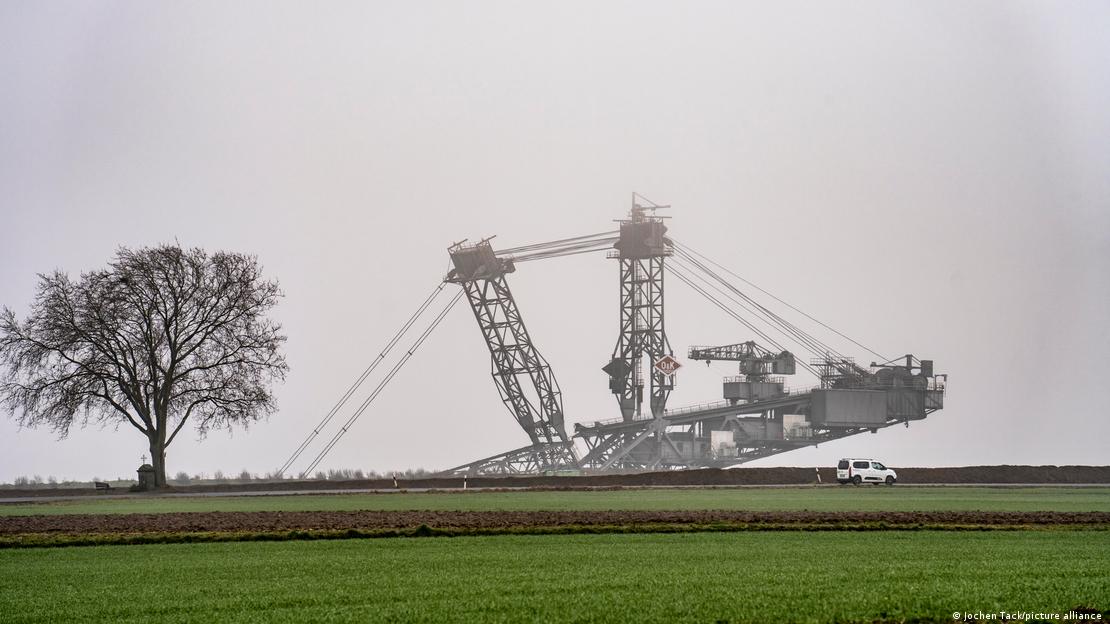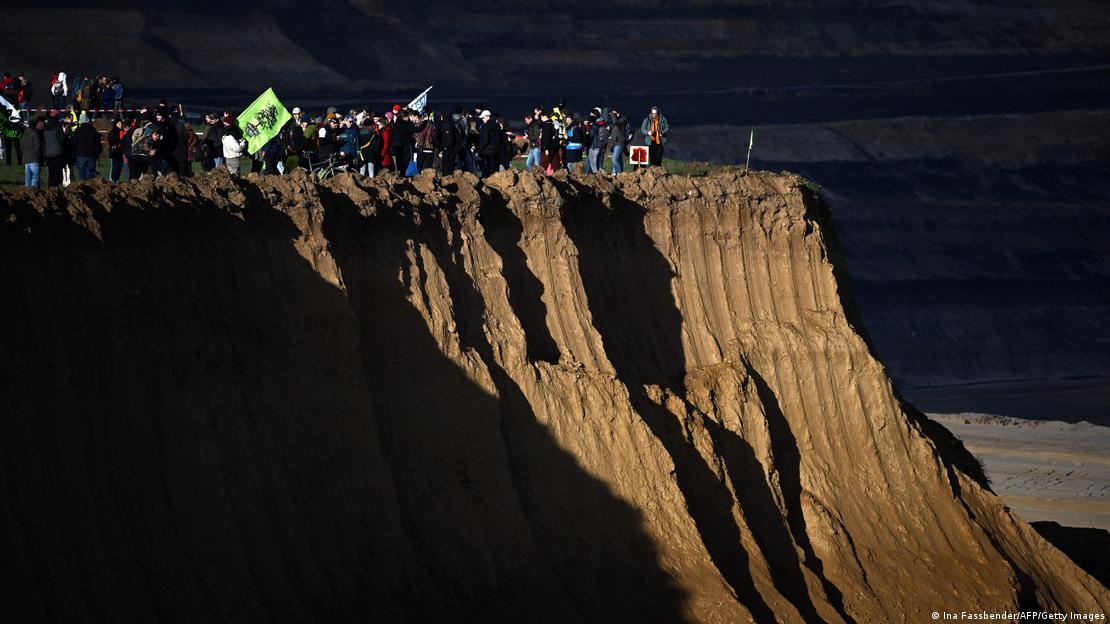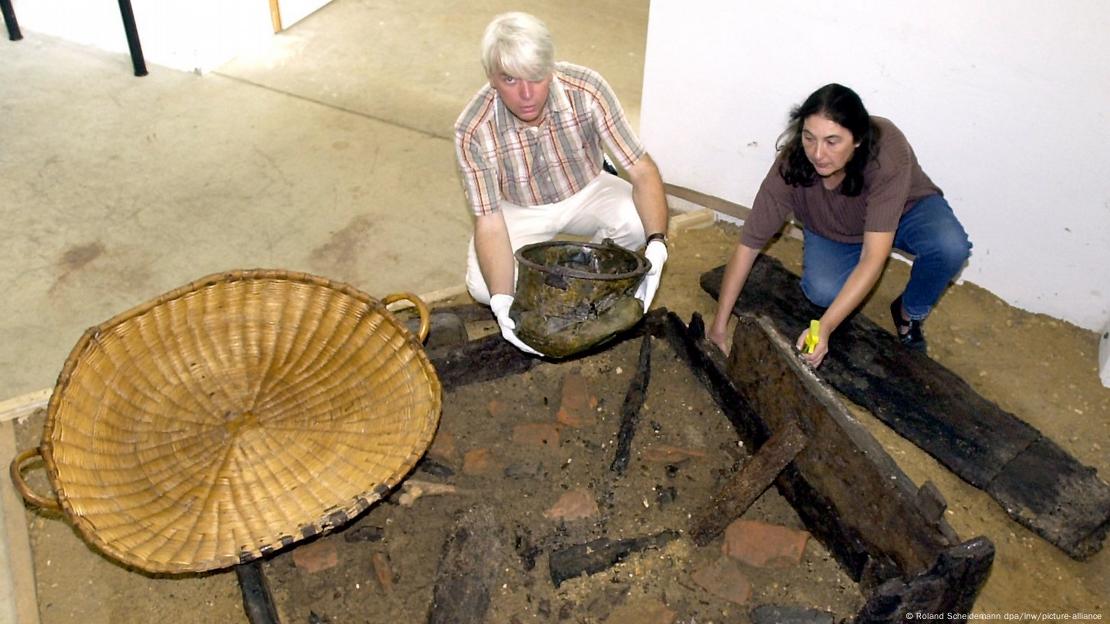Manasi Gopalakrishnan
DW
As massive coal excavators prepare to tear up the ground in the lignite-rich Rhineland, archaeologists are unearthing valuable ruins from ancient Roman settlements.
As massive coal excavators prepare to tear up the ground in the lignite-rich Rhineland, archaeologists are unearthing valuable ruins from ancient Roman settlements.
A Roman villa floorplan discovered on the edge of the Garzweiler open pit mine in 2022
Image: T. Dujmovic/LVR-Amt für Bodendenkmalpflege im Rheinland/dpa/picture alliance
The Rhenish lignite region in western Germany is home to vast open pit coal mines that made global headlines earlier this year when climate activists took a stand in the hamlet of Lützerath to halt the mining.
But while the climate impacts of coal extraction in the region has drawn a sharp focus, lesser known are the ancient archaeological remains also being unearthed during the fossil fuel excavations — including the above remains of a Roman villa discovered near Lützerath.
The oldest finds date back to when ancient Romans settled by the Rhine River after Julius Caesar waged the Gallic wars (58 to 51 BCE) and annihilated the local Germanic tribes. The city of Cologne, among others like Trier and Aachen, was a product of this settlement.
Alongside Cologne, several Roman settlements also sprung up in fertile neighboring areas.
"That is the reason why roman farmsteads stood relatively close to one another and there were hardly any forests here in Roman times. Almost everything was used for agriculture," explained Alfred Schuler, an archaeologist at the LVR Office for the Preservation of Archaeological Monuments in the Rhineland in Titz, near Cologne.
Schuler explains how crops were grown here and sold to other cities like Neuss or Cologne, and to the stations of Roman legionnaires — above all as supply for the urban populace.
"This was practically the granary of the borders of the Roman realm, of Roman life in our region," he said.
The Rhenish lignite region in western Germany is home to vast open pit coal mines that made global headlines earlier this year when climate activists took a stand in the hamlet of Lützerath to halt the mining.
But while the climate impacts of coal extraction in the region has drawn a sharp focus, lesser known are the ancient archaeological remains also being unearthed during the fossil fuel excavations — including the above remains of a Roman villa discovered near Lützerath.
The oldest finds date back to when ancient Romans settled by the Rhine River after Julius Caesar waged the Gallic wars (58 to 51 BCE) and annihilated the local Germanic tribes. The city of Cologne, among others like Trier and Aachen, was a product of this settlement.
Alongside Cologne, several Roman settlements also sprung up in fertile neighboring areas.
"That is the reason why roman farmsteads stood relatively close to one another and there were hardly any forests here in Roman times. Almost everything was used for agriculture," explained Alfred Schuler, an archaeologist at the LVR Office for the Preservation of Archaeological Monuments in the Rhineland in Titz, near Cologne.
Schuler explains how crops were grown here and sold to other cities like Neuss or Cologne, and to the stations of Roman legionnaires — above all as supply for the urban populace.
"This was practically the granary of the borders of the Roman realm, of Roman life in our region," he said.

A large excavator digs the Garzweiler coal pit in the Rhenish lignite regionImage: Jochen Tack/picture alliance
Coal mining and archaeology
Today, the region between Cologne, Aachen and Mönchengladbach, known as the "Rheinische Braunkohlerevier" (German for Rhenish brown coal region), is better known for brown coal mining than the ancient Romans that once lived there.
In January, thousands of climate activists, including Swedish founder of Fridays for Future, Greta Thunberg, descended on the region to stop German coal giant RWEfrom expanding coal mining under the village of Lützerath.
As the huge excavators that have created a massive open coal pit not only destroy local villages, but potentially the remains of ancient settlements. In order to protect the cultural heritage, RWE, the state of North Rhine Westphalia and LVR joined hands in 1990 to create an archaeological foundation aiming to unearth archaeological relics.
Speaking to DW, Robin Peters explains how experts first decide which areas at the mine site could contain valuable artifacts underground. Archaeological digs take place before the actual coal mining starts, he adds.
"We always dig in the open pit apron, not in the open pit itself," he said. Where the open pit is, there is no archaeology left."
"We try to gain insights into the soil, so to speak, slice by slice, and first try to discover traces in this area, under the topsoil, the humus, in the soil culture," he explains of discolorations which could "point to timber buildings, postholes, wall remains or foundation remains."

Climate activists protested the expansion of the vast open cast Garzweiler lignite coal mine in the region where ancient artifacts lay buried
Image: Ina Fassbender/AFP/Getty Images
From Roman graves to wells
This was how experts discovered the grave of a Roman priestess recently in Borschemich, near Cologne.
Experts said the priestess had a cremation in the early 2nd century CE. The body was clothed in material with woven gold before cremation and a wooden temple was erected on top of her grave.
Archaeologists also found a foldable chair and a wooden chest with tortoise-shell carvings of Roman and Egyptian gods. The grave is considered one of the most unusual cremation burials in the Roman province of Lower Germania, archaeologists say.
Schuler also emphasizes the uniqueness of the grave, saying how people had their own idea of the gods they prayed to at the time. "They simply transferred their idea of gods to these Roman figures, and they prayed to these figures when they actually meant to revere someone entirely different," he said.

In 2003, archaeologists discovered an ancient bronze pot
Image: Roland Scheidemann dpa/lnw/picture-alliance
"The Romans were very open and tolerant. As long as one did not undertake anything under the official Roman gods [Jupiter, Juno and Minerva], one could pray to whoever one wanted to," he added.
In 2020, archaeologists discovered an ancient well in Hambach, another hotspot for climate activists due to its remnant old-growth forest. The well's center revealed a pillar with a sculpture of Jupiter.
Altogether, there are hundreds of artifacts buried in the coal mining region that have been unearthed in the last decades. Many more are expected to make their way up to the surface.
Schuler and Peters from the LVR outpost are meanwhile excited and relieved to have dealt with their latest finding: A small motte-and-bailey castle from the Middle Ages.
It's not an ancient Roman relic, but like its Latin counterparts, Schuler says, the artifacts have been documented, photographed, sketched, measured and sent to the museum.
"The Romans were very open and tolerant. As long as one did not undertake anything under the official Roman gods [Jupiter, Juno and Minerva], one could pray to whoever one wanted to," he added.
In 2020, archaeologists discovered an ancient well in Hambach, another hotspot for climate activists due to its remnant old-growth forest. The well's center revealed a pillar with a sculpture of Jupiter.
Altogether, there are hundreds of artifacts buried in the coal mining region that have been unearthed in the last decades. Many more are expected to make their way up to the surface.
Schuler and Peters from the LVR outpost are meanwhile excited and relieved to have dealt with their latest finding: A small motte-and-bailey castle from the Middle Ages.
It's not an ancient Roman relic, but like its Latin counterparts, Schuler says, the artifacts have been documented, photographed, sketched, measured and sent to the museum.

No comments:
Post a Comment